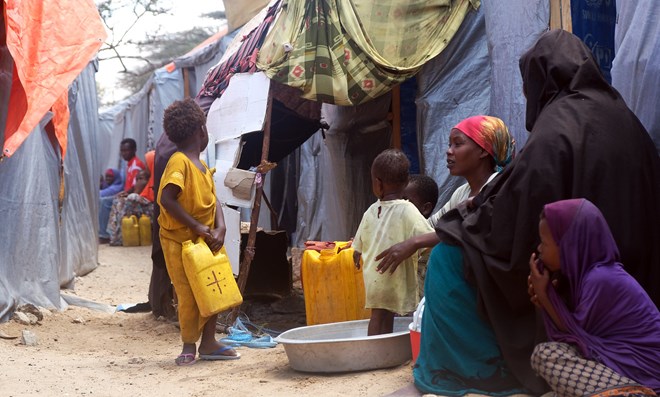
Monday November 5, 2018
As of today, some 2.6 million people remain displaced in Somalia. Despite their dire needs, the Somalia Humanirian Response Plan remains over 50 per cent underfunded. Credit: OCHA/M.Kovac
An upsurge in insecurity and conflict has triggered a new wave of displacement in the Lower Shabelle region of South West State. According to UNHCR-led Protection and Return Monitoring Network (PRMN), more than 34,000 people have fled the area since the beginning of August, joining thousands of others who fled earlier in 2018 or before due to conflict, drought and floods, in which the majority are women and children.
As parties to the conflict continue to take control of smaller towns and villages, the anxiety and unpredictable security situation continues to force families to flee their homes in search of safety. The United Nations and humanitarian partners have boosted the delivery of assistance and the provision of services to the affected communities.
Tension reportedly remains high in villages along the Afgooye-Qoryooley corridor with further displacement likely due to the ongoing military activities in the area. The rise in displacement has resulted in a significant increase in humanitarian needs within the district, where some areas are hard-to-reach, and in Mogadishu, where most of the displaced have fled to.
Information on the extent of the humanitarian impact in the areas of origin remains limited due to insecurity, limited humanitarian presence and access to some areas. The displaced populations live in dire conditions with limited access to basic services and livelihood opportunities.
Overall, some 2.6 million people remain displaced in Somalia. Despite the increasing needs, the Somalia Humanitarian Response Plan (HRP) remains critically underfunded. While humanitarian partners continue to provide life-saving assistance, the 51 per cent funding shortfall is hampering the sustainability and effectiveness of delivery of vital services and the restoration of facilities destroyed by natural disasters or ongoing conflict. The HRP has so far received $751.4 million.